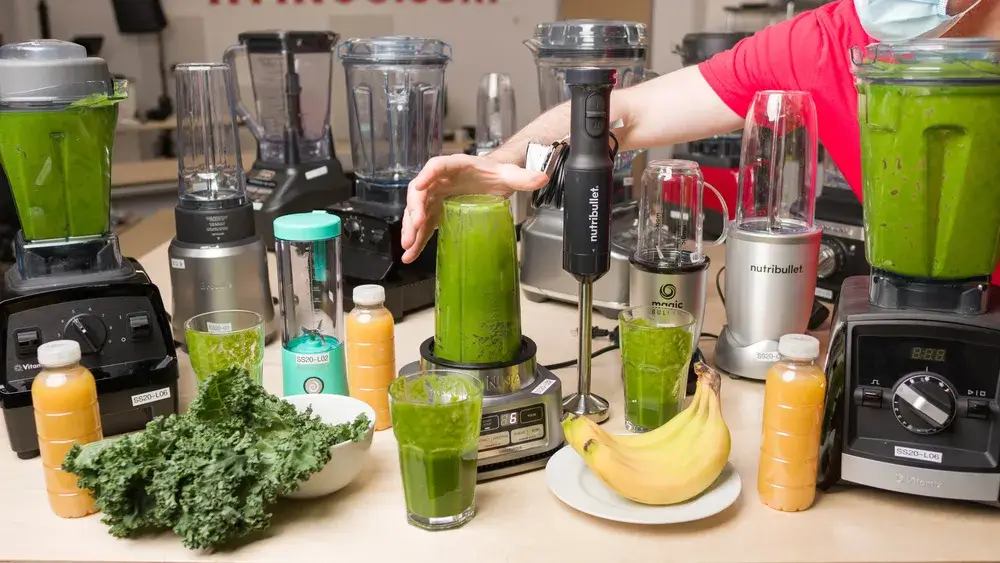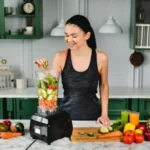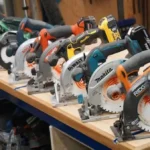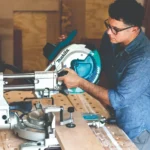The short answer is no, you do not need a special blender to make smoothies. Any blender that can crush ice and blend fruits and vegetables can make a smoothie. However, some blenders are better suited for making smoothies than others, depending on your preferences, budget, and needs. In this article, we will explore the different types of blenders available, their pros and cons, and how to choose the best blender for your smoothie-making needs.
Types of Blenders
There are three main types of blenders that you can use to make smoothies: countertop blenders, immersion blenders, and personal blenders. Each type has its own advantages and disadvantages, depending on the features, power, capacity, and price.
Countertop Blenders
Countertop blenders are the most common and versatile type of blenders. They have a large pitcher that sits on a base with a motor and blades. They can handle large batches of ingredients and have multiple speeds and functions to adjust the texture and consistency of your smoothies. Some countertop blenders also have pre-programmed settings for specific recipes, such as smoothies, soups, sauces, and ice creams.
The main benefits of countertop blenders are:
- They can make smooth and creamy smoothies with minimal effort and time.
- They can crush ice and frozen fruits easily and evenly.
- They can handle a variety of ingredients, including nuts, seeds, leafy greens, and fibrous vegetables.
- They can make large quantities of smoothies at once, which is ideal for families or parties.
The main drawbacks of countertop blenders are:
- They are bulky and take up a lot of counter space and storage space.
- They are noisy and can disturb your neighbors or family members.
- They are more expensive than other types of blenders, especially the high-end models.
- They are harder to clean and require more parts to be washed.
Some examples of countertop blenders are:
- Vitamix 5200: This is one of the most popular and powerful countertop blenders on the market. It has a 2-horsepower motor and a 64-ounce pitcher that can blend anything from smoothies to hot soups. It has 10 variable speeds and a pulse function to control the texture and consistency of your smoothies. It also comes with a tamper to help push down the ingredients and a 7-year warranty. The Vitamix 5200 costs around $450 and is available on Amazon.
- Ninja Professional Plus Blender with Auto-iQ: This is a more affordable and user-friendly countertop blender that has a 1400-watt motor and a 72-ounce pitcher. It has 3 preset programs for smoothies, frozen drinks, and ice cream, as well as 4 manual speeds and a pulse function. It also has a unique blade design that creates a vortex to blend the ingredients more efficiently. The Ninja Professional Plus Blender with Auto-iQ costs around $100 and is available on Amazon.
Immersion Blenders
Immersion blenders, also known as hand blenders or stick blenders, are small and portable devices that have a motor and a blade at the end of a long shaft. They are designed to be immersed directly into the ingredients in a bowl, pot, or cup. They are ideal for making smoothies, soups, sauces, and purees.
The main benefits of immersion blenders are:
- They are compact and easy to store and carry around.
- They are quiet and do not disturb your neighbors or family members.
- They are inexpensive and can fit any budget.
- They are easy to clean and only require the blade to be rinsed or wiped.
The main drawbacks of immersion blenders are:
- They are less powerful and efficient than countertop blenders and may leave chunks or lumps in your smoothies.
- They are not suitable for crushing ice or frozen fruits and may damage the blade or the motor.
- They are not very safe and may cause splashes or burns if not used carefully.
- They can only make small batches of smoothies at a time, which is not ideal for sharing or storing.
Some examples of immersion blenders are:
- Cuisinart Smart Stick: This is one of the most popular and reliable immersion blenders on the market. It has a 200-watt motor and a stainless steel blade that can blend smoothies, soups, sauces, and more. It has 2 speeds and a one-touch control for easy operation. It also comes with a 16-ounce mixing cup and a 3-year warranty. The Cuisinart Smart Stick costs around $35 and is available on Amazon.
- Mueller Austria Ultra-Stick: This is a more versatile and powerful immersion blender that has a 500-watt motor and a stainless steel blade. It has 9 speeds and a turbo function to adjust the texture and consistency of your smoothies. It also comes with a whisk attachment, a milk frother, and a 20-ounce mixing cup. The Mueller Austria Ultra-Stick costs around $35 and is available on Amazon.
Personal Blenders
Personal blenders, also known as single-serve blenders or bullet blenders, are small and convenient devices that have a motor and a blade in a base and a cup that doubles as a blending container and a drinking vessel. They are designed to make individual portions of smoothies, shakes, and juices.
The main benefits of personal blenders are:
- They are compact and easy to store and carry around.
- They are fast and simple to use and only require one button to operate.
- They are easy to clean and only require the cup and the blade to be washed.
- They are perfect for making smoothies on the go, as you can blend and drink from the same cup.
The main drawbacks of personal blenders are:
- They are less powerful and efficient than countertop blenders and may leave chunks or lumps in your smoothies.
- They are not suitable for crushing ice or frozen fruits and may damage the blade or the motor.
- They are not very durable and may leak or break over time.
- They can only make small batches of smoothies at a time, which is not ideal for sharing or storing.
Some examples of personal blenders are:
- NutriBullet Pro: This is one of the most popular and powerful personal blenders on the market. It has a 900-watt motor and a stainless steel blade that can blend smoothies, shakes, juices, and more. It comes with two 32-ounce cups, two flip-top lids, and a recipe book. The NutriBullet Pro costs around $80 and is available on Amazon.
- Hamilton Beach Personal Blender: This is a more affordable and user-friendly personal blender that has a 175-watt motor and a stainless steel blade. It comes with a 14-ounce cup and a travel lid. The Hamilton Beach Personal Blender costs around $20 and is available on Amazon.
How to Choose the Best Blender for Your Smoothie-Making Needs
As you can see, there are different types of blenders that you can use to make smoothies, and each type has its own pros and cons. The best blender for you depends on your preferences, budget, and needs. Here are some factors to consider when choosing a blender for your smoothie-making needs:
- Power: The power of a blender is measured in watts or horsepower and determines how fast and how well the blender can crush ice and blend ingredients. Generally, the higher the power, the smoother and creamier the smoothies. However, higher power also means higher noise, higher price, and higher energy consumption. A good range of power for making smoothies is between 200 and 1500 watts, depending on the type of blender and the ingredients you use.
- Capacity: The capacity of a blender is measured in ounces or cups and determines how much smoothie you can make at once. Generally, the larger the capacity, the more smoothies you can make and share. However, larger capacity also means larger size, larger weight, and larger cleaning effort. A good range of capacity for making smoothies is between 14 and 72 ounces, depending on the type of blender and the number of people you serve.
- Features: The features of a blender are the extra functions and settings that the blender offers to enhance your smoothie-making experience. Generally, the more features, the more versatile and convenient the blender. However, more features also mean more complexity, more maintenance, and more cost. Some common features to look for in a blender are variable speeds, pulse function, pre-programmed settings, timer, digital display, self-cleaning, and safety lock.
- Price: The price of a blender is the amount of money you have to pay to buy the blender. Generally, the higher the price, the higher the quality and the performance of the blender. However, higher price also means higher investment, higher risk, and higher expectation. A good range of price for buying a blender is between $20 and $500, depending on the type of blender and the brand of the blender.
Conclusion
In conclusion, you do not need a special blender to make smoothies. Any blender that can crush ice and blend fruits and vegetables can make a smoothie. However, some blenders are better suited for making smoothies than others, depending on your preferences, budget, and needs. You can choose from three main types of blenders: countertop blenders, immersion blenders, and personal blenders. Each type has its own advantages and disadvantages, depending on the power, capacity, features, and price. You can also consider some factors to help you choose the best blender for your smoothie-making needs, such as power, capacity, features, and price.





